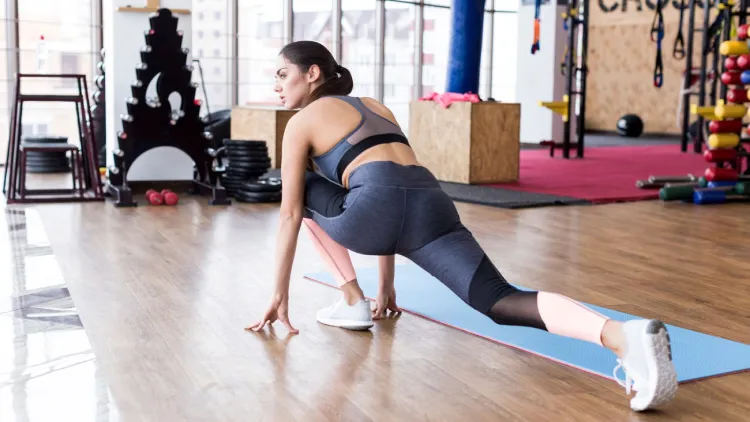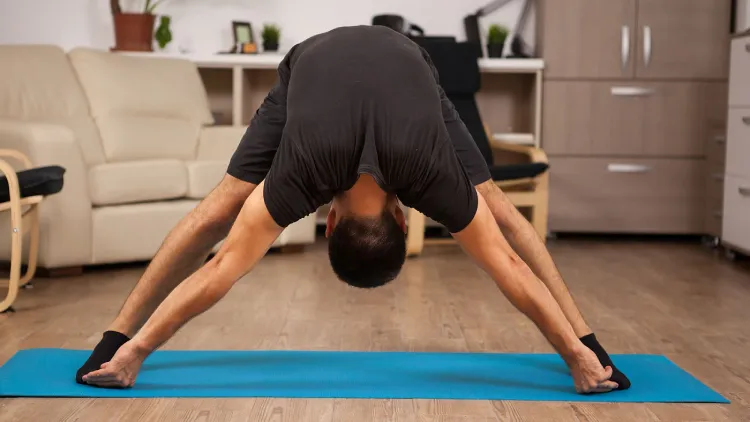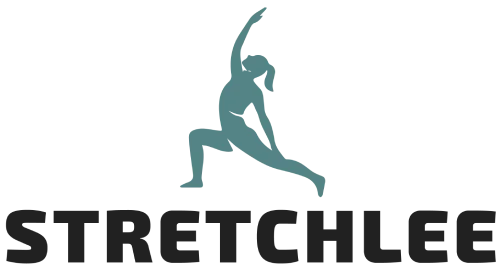The best back exercises are exercises that combine the compound lifts, isolation exercises, and intelligent training with the aim of developing a stronger, larger, and more stable back. They help in the improvement of posture, enhancing athletic output, safeguarding your spine, as well as training the lats, traps, rhomboids, and spinal erectors to create a strong, well-sculpted physique.
Why Training Your Back Matters
Your back is made up of several overlapping muscle structures, which serve a major role:
- Latissimus dorsi (lats): These wide-sweeping muscles are essential to the bringing of power, and they form the shape of the torso, giving it a V shape.
- Trapezius (traps): This shoulder stabiliser and shoulder blades mover protects the neck.
- Rhomboids: Pull the shoulders backwards to improve posture.
- Erector spinae: You should maintain a straight back without any issues to support heavy lifts.
Chest and arms also achieve provided that you have a strong back to use them to get a good foundation. Posture, lifts, and even stammering practices are affected by the lack of muscle development in your back, so that when you are out of shape, you are limping. The proper attention to the best back exercises will guarantee proper training of the entire posterior chain.

The Best Back Exercises
The most efficient movements in the case of size, power and stamina are described below. It is also they who respond to the big question, too: what exercise do you think works most on the back? Deadlifts and pull-ups tie with the response since both of them use almost all major back muscles.
1. Pull-Ups
Pull-ups still are one of the most effective back workouts for the upper back
- The muscles involved were: Lats, traps, rhomboids and biceps.
- How to perform: One should grasp a pull-up bar with a grip that is at least shoulder-wide or a little beyond. Close the chin across the bar and then just hang and lower yourself on control.
- Progression: In case you are not ready to go through with a bodyweight pull-up, use a band or assisted pull-up machine. Light exercises
- Eating gargles, weighted pull-ups allow you to increase muscle strength.
Pull-ups are direct methods or advice on how to build a stronger and wider back. Endurance may be enhanced by high-rep sets, whereas hypertrophy is triggered by low-weighted lower-rep sets.
2. Deadlifts
Deadlifts are the all-time king when it comes to all-around development.
- And muscles: Erector spinae, traps, glutes, hamstrings, core, and lats.
- How to perform it: This one is performed with feet shoulder-width apart, hands on the barbell, straighten your back and bend at the hips. Raise the bar and stand on the legs. Lower it carefully.
- Why it works: Deadlifts are the most effective movement as they stimulate more muscle mass than virtually any other action so which is why it is included in the list of the three most effective movements out of all the compound lifts (the others include squats and bench presses).
Deadlifts are important in developing a huge back and enhancing overall strength. To prevent overtraining, you should exercise them only once or twice a week and remember not to pay so much attention to the constructs but to the weight.
3. Bent-Over Rows
The bent-over rows strengthen the middle and upper back and also strengthen the posture.
- Body parts engaged: Lats, traps, rhomboids, and rear delts.
- Instructions: Hold the barbell/dumbbells in your hands, bend at the hips until you are almost parallel to the floor. Pull the weight towards underneath chest or stomach.
- Note: This can be achieved by keeping a straight back in order to prevent injury and transmit forces better.
Rowing and swimming are some of the most common sports that develop some of the most powerful back muscles in individuals, and therefore imitate this bending motion in bent-over rows.
4. Lat Pulldowns
Lat pulldowns are wonderful to use in separating your lats in cases where bodyweight pull-ups cannot occur.
- Worked parts: Lats and upper back.
- The way to set up yourself in a lat pulldown machine and pull the bar to your savage chest with a straight back. Slowly return to the top.
- Variation: To vary the grip – wide, narrow, or underhand – and strike with different lat angles.
The given exercise strengthens the exercise regime of pull-ups and provides the ability to control the weight precisely.
5. Face Pulls
Pull-downs are essential in the body’s shoulders and the stability of the upper back.
- Muscles: Back (rear delts, traps, rhomboids).
- Best way to perform it: Tie a rope to an Xxcable machine around his face. Fling the rope upwards at your face, making the elbows high and flared out.
- Why it is important: It compensates the pressing motions such as bench presses, which can make the shoulders to become sore.
6. Single-Arm Dumbbell Row
This action creates isolation on each side of your back, taking care of the imbalances.
- Muscles: Lats, traps and rear delts.
- How to accomplish it: It is accomplished by placing one hand and one knee on a bench, gripping a dumbbell with the other hand and rowing it into your waist. Lower with control.
- Tip: Remain stable with your torso and do not twist.
7. T-Bar Rows
T-bar rows provide an alternative to both barbell and dumbbell rows.
- The muscles involved were the mid-back, lats, traps, and rhomboids.
- How it is done: Perch a T-bar row machine, or use a landmine attachment to hold a barbell. Place yourself up on the bar and bend your hips back, and tug the handles towards your middle.
- Why it’s great: It offers a heavy, stable type of movement pattern that is helpful in accumulating the weight of the mid back.
8. Rack Pulls
Rack pulls refer to a partial deadlift of the knee height or the mid-shin height.
- Worked muscles: back (lower and upper), traps, glutes.
- Position: Set a barbell on safety pins or blocks. Get her under your hips. Bent up, and bring the bar up to lockout. Lower slowly.
- Advantages: You can move heavier weights than in a normal deadlift, in addition, which it works the upper-back thickness.
9. Supermans
One that is a favourite on the lower back target.
- Muscles involved: Erector spinae and glutes.
- Technique: Lying in the prone position with the arms up. Raise legs, chest, and arms off the floor. Hold briefly, then lower.
- The rationale behind its effectiveness strengthens equipment-free spinal stabilisers.

Training Tips for the Best Back Exercises
- Volume: 3-4 exercises would be sufficient, particularly when it comes to heavy lifting. Novice lifters can do 3 exercises per day; experienced trainers can require additional ones.
- Reps and sets: Low-weight and high-weight rep maxes can both be used to gain muscle. The most popular is 3×10; however, combining the rep ranges activates the maximum growth.
- Big then Light: You want to do some of the big ones initially, such as deadlifts or pull-ups, and then work on some of the isolation exercises afterwards.
- Rest days: Recommend at least one to two rest days in between your back sessions to give rest and growth.
- Progression: add weight or reps. Exercises such as 5-4-3 rep ladders, or 3-3-3 strength training cycles are acceptable to the advanced lifters.

Building a Huge Back: Key Principles
- Progressive overload: Continue to add weight, reps or intensity with time.
- Nutrition: Muscle repair depends on high-quality protein, such as eggs (eggs contain approximately 15-18 grams of protein, which is achieved by approximately 2-3 eggs).
- Balance: The ideal 4-day split might be as follows:
Day 1: Back & biceps
Day 2: Chest & triceps
Day 3: Rest or legs
Day 4: Shoulders & core - Sport crossover, Rowing, swimming, gymnastics and wrestling activities are naturally known to build the best back muscles because of the pull-which is repeated.
When your back is not improving, review your intensity, protein consumption and your recovery. Other times, merely incorporating a new variation of pull, such as T-bar rows or rack pulls, opens new discovery.

Rep Schemes, Methods, and Rules
You will be told of the big three, big four, rules of numeric training-overall, these are systematised means of volume and intensity.
- Big three exercises: Squats, deadlifts, and bench press- basic to complete strength.
- Big four exercises: Sometimes involves overhead press using the big three to provide full body coverage.
- 3×3 or 3 3 3: Three reps of three exercises or kicking of three exercises. This is trendy in terms of power and fat burning.
- 5-4-3 exercises or 7-73 exercises: Rep drop or high volume increase to develop size and endurance.
- 30/15,10 techniques: Time-under-tension modalities to induce hypertrophy to the maximum.
All these plans help in supporting back training to be accomplished by changing the reps, sets, and rest to get into the results of strength, size, or fat loss.
Common Mistakes to Avoid
- Failure to address the lower back: Incorporate such exercises as Supermans or back extensions.
- Overtraining: The best back exercises require rest. The expansion of the muscles occurs when you rest rather than when you are training.
- Nutrition ignorance: You will not develop as much as you would with proper training because you are not ingesting the proper protein and calories.
- Poor technique: The more lifts you round on the heavier they are, the greater the risk of injury.

Final Thoughts
The best back exercises do not just end with the couple of rows and pulldowns available; they establish a strong, even body, on which your whole upper body sits. The combination of both complex lifts, such as the deadlifts and the pull-ups, coupled with complex yet specific exercises such as T-bar rows, rack pulls, and face pulls, can make you have a strong and beautiful back.
The constant workout, good programming, overloading, and proper nutrition will lead you back to the good, back to the gigantic looking fitness and athleticism. You want to be strong, big, or well-posed, and you can be sure that you will succeed by learning how to do the best back exercises.
Frequently Asked Questions
Which are the most effective overall back exercises to gain size and strength?
Pull-ups, T-bar rows, deadlifts, and bent-over rows are the most appropriate overall back exercises. The numerous muscle groups found in these compound movements include lat, traps, rhomboids and spinal erectors as they all assist you to develop a strong, wide, widespread back.
What is the number of exercises to be done on the back?
Three to four back exercises during sessions are seen to be great by the majority. Begin with the complex motions like the deadlifts or pull-up, and combine the subset movements like the face pull movements or the single-arm rows movement. This equilibrium will eliminate overtraining and will maximise growth.
What is the best training frequency for my back?
One or two back workouts a week is a good amount of time to train your back. On the days between back sessions, make sure that there is at least a whole rest day so that the muscles can relax and develop. Set frequency keeping all in accordance with fitness, nutrition and ability to rest.
What will I do to enable my back muscles to grow?
The keys are progressive overload, proper nutrition and constant rest. It is necessary to increase weight or reps bit by bit, have a normal amount of protein (eagerly embrace eggs or lean meat), and vary exercises such as rack pulls and T-bar rows to provoke new growth.








2 thoughts on “Best Back Exercises: Strengthen and Protect Your Back”
whoah this blog is great i really like reading your articles. Stay up the good work! You understand, a lot of persons are hunting around for this info, you can help them greatly.
Thank you so much! I’m really glad you enjoy the content and find it helpful!